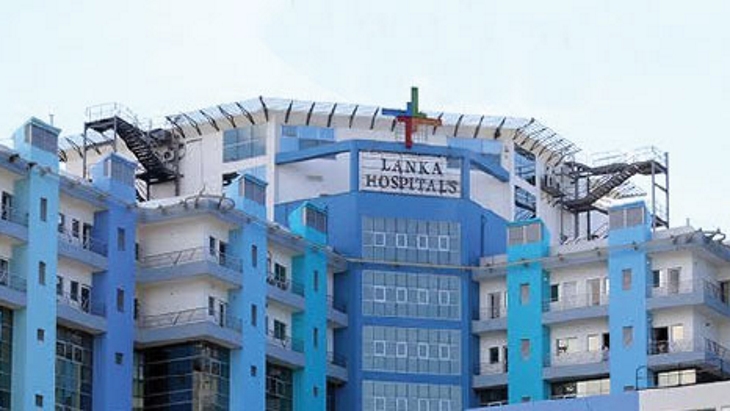Compare costs
Average cost of treatment in key countries
Include indicative costs for treatment, travel, insurance and accommodation
Get a quote
1. Complete the enquiry form
2. Select countries of interest
3. Providers respond directly
If you have exhausted all the non-surgical techniques for weight loss and you need to lose a significant amount of weight, you may consider surgical obesity treatment abroad.
A range of treatments are available; some are less invasive, requiring an endoscopy while others involve extensive ‘keyhole’ surgery with a laparoscope. Most treatments need some degree of follow up, as well as support and ongoing monitoring and treatment once you return home.
If all goes smoothly, this procedure is quite well suited to treatment abroad as it is fitted in a short procedure involving only endoscopy. It is important to realise that a gastric balloon is always a temporary weight loss solution. Wherever you have it fitted, it will need to be removed after six months. This will mean a return visit to the clinic of your choice, which may be offered as part of your clinic package, so you will need to factor in additional travel costs if you travel abroad.
A gastric balloon is fitted endoscopically. That means that you are sedated, but not put under anaesthetic, while the uninflated balloon is placed into the stomach via the throat and oesophagus. The gastric balloon is then inflated using a saline solution. The presence of this balloon makes you feel full and you don’t need to eat very much food to feel uncomfortably bloated as the available volume of the stomach is reduced.
Most people experience sickness in the first few days after a gastric balloon is fitted, but this is usually temporary. In some cases, however, the stomach cannot tolerate the balloon and nausea and vomiting may not subside for several days, extending the length of time you need to spend at the clinic. If it persists beyond that, the balloon will need to be removed as it is clearly not going to suit you.
A gastric band, or lap band, is an inflatable cuff that is placed around the stomach around three quarters of the way up. This creates a small pouch at the top of the stomach, which then fills quickly making you feel very full after only a few mouthfuls. Food slowly passes into the rest of the stomach over the next few hours.
The band is filled with saline and can be loosened or tightened by adjusting the saline pressure through a small port in the skin of your abdomen. If you are losing weight slowly in the weeks and months after the procedure, you may need more saline to be injected into the band to tighten it.
You will need to follow a strict diet of liquid foods during the first few days, followed by about 5 weeks on pureed food and it may be 3 months before you can eat tiny portions of food that you actually chew.
Fitting a gastric band is a common procedure done using a laparoscopic ‘keyhole’ technique under general anaesthetic. It is normally done as a day case with more surgeons abroad offering a service every year. A well fitted band can last fifteen years or more. However, even under ideal circumstances, around one in ten patients will require a second surgery to correct or replace their band, and around one in four bands will slip from their original position, causing complications.
Gastric sleeve surgery, or sleeve gastrectomy, involves cutting away up to 75% of the stomach using a vertical division but leaving the overall structure of the digestive system intact. Food will pass into the much smaller stomach, which becomes more like a thin tube, making you feel full quickly. Food will then leave the stomach and enter the small intestine for digestion as normal.
Gastric sleeve surgery can usually be performed using laparoscopic or keyhole surgery and is usually done with a 2-3 day stay in hospital. It takes longer than a gastric band fitting and requires longer under anaesthetic. It is still suitable for medical tourists but you will need to plan a stay in the country of your choice so that you can recover sufficiently to travel home. Two weeks is probably the minimum.
A gastric bypass is major abdominal surgery that changes the structure of the digestive system permanently. Most of the stomach is removed and then an opening in the remaining smaller stomach is made and joined directly to the small intestine further along from the point where food normally exits. This means that you feel fuller much more quickly but also that you absorb food less efficiently because a stretch of the small intestine is bypassed.
Gastric bypass surgery is a more complex operation but is still usually done by laparoscopic surgery. It is not safe to attempt in people with a BMI of over 50 so be wary of any obesity clinic abroad that offers this as an option. if you are morbidly obese.
Having a gastric bypass abroad is possible and surgeons all over the world offer the procedure and perform it safely and well. The main problem is follow up; you need constant checks on your nutrition and you will need to follow a special diet and take nutritional supplements. It can, however, have a dramatic effect on type 2 diabetes, which tends to disappear within days of surgery.
While the duodenal switch is believed to be the most effective of all obesity surgeries in the very obese, it is also the most complex and risky. It involves two stages; in the first, a modified sleeve gastrectomy removes most of the stomach. In the second stage, the remaining stomach is reconnected with the small intestine, but at a position much further along than in a gastric bypass. In very obese patients, the first stage will precede the second by several months. Only after significant weight loss is achieved does it become safe to do the second stage.
Once both stages are complete, virtually no food absorption takes place in the small intestine, making weight loss rapid and sustained. It also means you need life-long nutritional monitoring and support.
It is usually possible to perform a sleeve gastrectomy and duodenal switch using a laparoscopic technique, but the larger you are, the greater the risk of complications. Going abroad is an option, but somewhere not too far from home will be safer, and you must have your aftercare in place for the weeks, months and years to follow.


